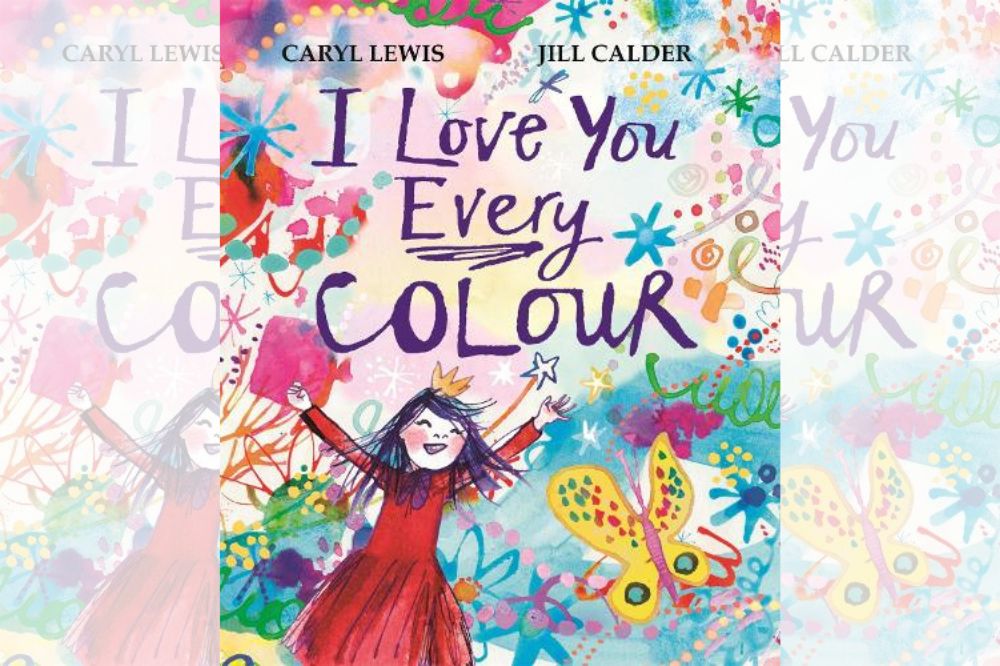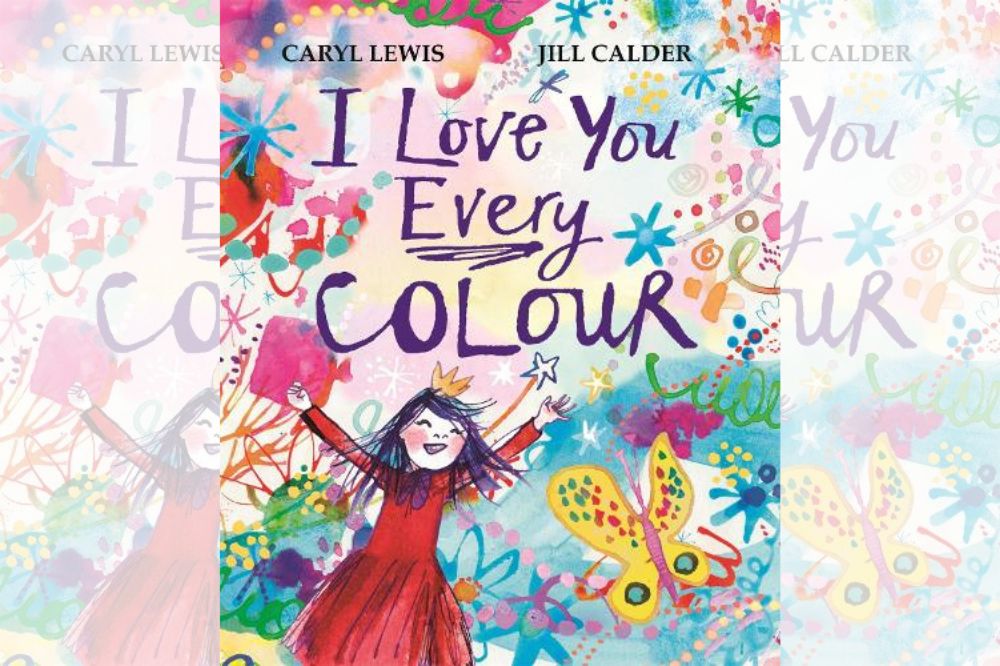 I Love You Every Colour by Caryl Lewis, illustrated by Jill Calder, Pan Macmillan
I Love You Every Colour by Caryl Lewis, illustrated by Jill Calder, Pan Macmillan
Molly Stubbs
On the surface, I Love You Every Colour by two-time winner of Wales Book of the Year Caryl Lewis is a beautifully written and illustrated book about the colours of our world, far more vibrant in the eyes of a child, and what it means to love. Like all good children’s books, it has a relatively simple message that is overwhelming in its potential impact. After all, how does one explain love to a child?
Within its prepossessing pages, I Love You Every Colour says what we see, that a lush forest is green and brown, that winter shimmers in silver, that a day at the beach is bright gold just as the fuzzy bumblebee, and uses it to encourage an all-encompassing positivity about the world around us.
Take the above example of a sunny summer holiday. Caryl Lewis writes: “I love you gold. Sunflowery. Fuzzy bee and polleny. I love you sand, I love you dunes, ice-cream van tunes. I love you wave-jumpy and ripples, I love you giggles and love you tickles.” There is little room to be anything but joyful when such boundless love is all around us and displayed in such a succinctly sweet way.
The fun yet original rhymes, the simple sentences that carry a great weight, the poetic bounce on every line all speak to a little book quite apart from the Gruffalos and Hungry Caterpillars of the world. They each have the likability inherent to good children’s literature, but I Love You Every Colour seems to have something else hiding beneath the surface of its unapologetic artistry.
That ‘Je ne sais quoi’ might just be the thing that sparked Lewis’s idea for the work, a wealth of inspiration from the annals of Welsh history.
Inspirations
When I think back to the books my parents read to me at bedtime, I can’t remember ever considering the author’s inspirations. I enjoyed the fruits of their labour, giggled at the drawings, unconsciously learnt grand lessons about being human, but never pondered what might’ve been their reason for writing in the first place. Not surprising, since in-depth literary discussions with a toddler were probably the last thing on my parents’ to-do lists.
In Lewis’s case, it was the Poets of Nobility (cywyddwyr or Beirdd yr Uchelwyr) in Wales that provided her with creative fuel. Professional court poets from 1284 to 1600, the Poets of Nobility were tasked with immortalising Welsh noble authority, and later, legitimising the Tudor monarchs, who were of course Welsh in origin. In return for the necessities of housing, food, and the ability to continue writing, they wrote princes and kings into history with lilting displays of strength in battle and elegiac laments when they passed.
In particular, Lewys Glyn Cothi (1420-1490) caught Lewis’s imagination with his poignant poem to his son, ‘Marwnad Siôn y Glyn’. While his other work largely praises Henry Tudor and powerful figures at court, here is a heartbreaking list of the ways a father loved his son following his death at age 5. While it’s undeniably beautifully written, it is plain in its harrowing sadness and surprisingly refreshing in its lack of artifice, refusing to be overwhelmed by sentiment.
Unable to get Sion y Glyn and the depth of his father’s love out of her mind, Lewis set to work. While I Love You Every Colour deals with the ways a child might love play fighting with swords, the pretty butterfly in the garden, how the trees love the earth, how the stars love the moon, it deals principally with the boundless, unconditional love that parents have for their children. A theme, as evidenced, in use for thousands of years, yet just as fresh and important and truthful today.
Art
Aside from the coffee table book, perhaps the natural maturation of children’s books, nowhere else in the literary world do the written word and visual depiction of those words command equal enjoyment. In the case of I Love You Every Colour, handed the seemingly daunting task of matching Lewis’s effortless writing was Scottish illustrator Jill Calder.
Blending traditional and digital mediums, Calder’s illustrations have a welcoming quality perfect for children’s literature, but maintain an artistic sensibility not out of place on gallery walls. Each turn of the page reveals a new world with stunning depth, a fearless use of blank space and, of course, every colour on the paint palette.
I could’ve happily spent hours as a child picking out the little details in each of the illustrations, bountiful as they are, and certainly would’ve attempted to copy a few while covered in colours at the kitchen table. Match Lewis’s effortless writing Jill Calder certainly does.
I’ve often thought that the best children’s media will offer something for the adults who have to see their children through it. A sly joke in Despicable Me or a Seussian rhyme scheme that’s just as much fun to speak as it is to listen to. But I Love You Every Colour goes further. Aside from rereading some of my own childhood favourites I don’t spend much time with books like this. But I genuinely believe it might be one of the only children’s books I’ve read to offer just as much emotional satisfaction to its adult reader as to its young listener.
For the artistic child, the child who basks in the richness of their new world, and the parent who reminds them each night that they are loved to the ends of the earth, I Love You Every Colour’s warmth and considered approach provides so much with its quiet abundance.
I Love You Every Colour written by Caryl Lewis and illustrated by Jill Calder is published by Pan Macmillan and is available from all good bookshops.
Support our Nation today
For the price of a cup of coffee a month you can help us create an
independent, not-for-profit, national news service for the people of Wales, by
the people of Wales.


